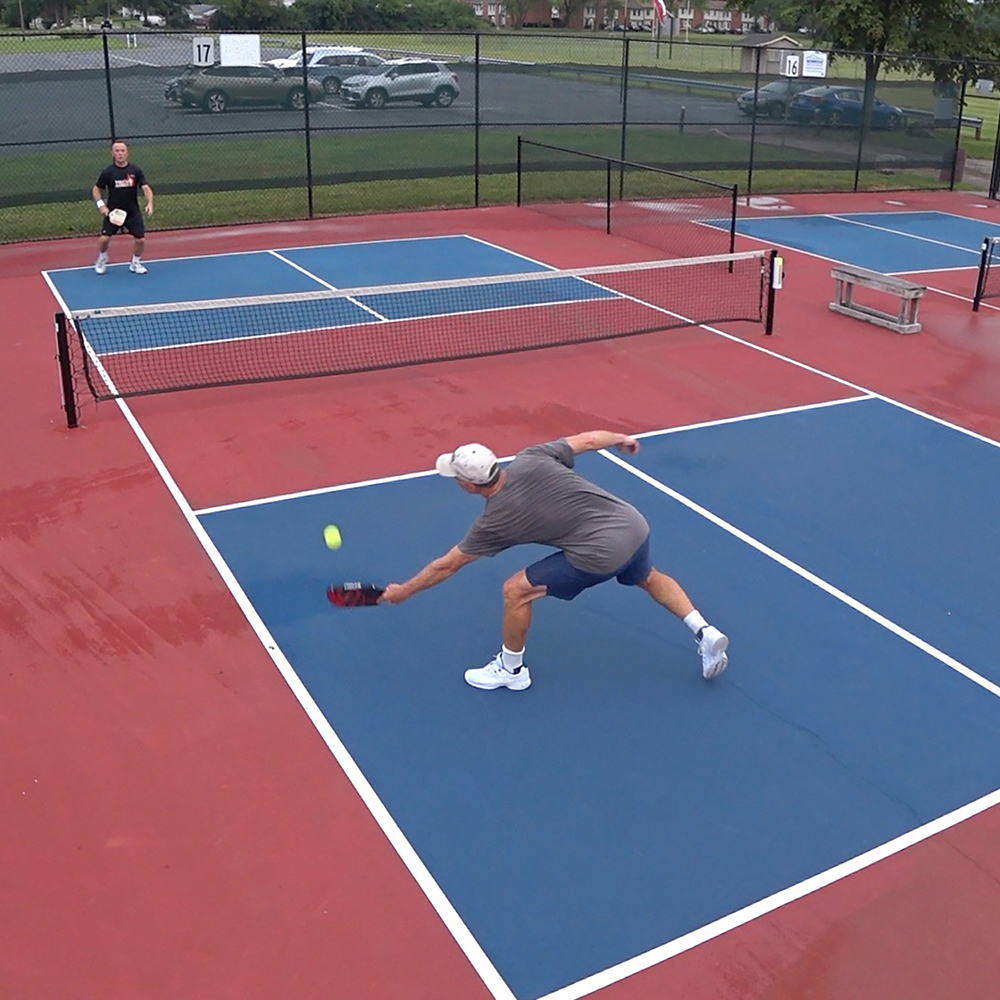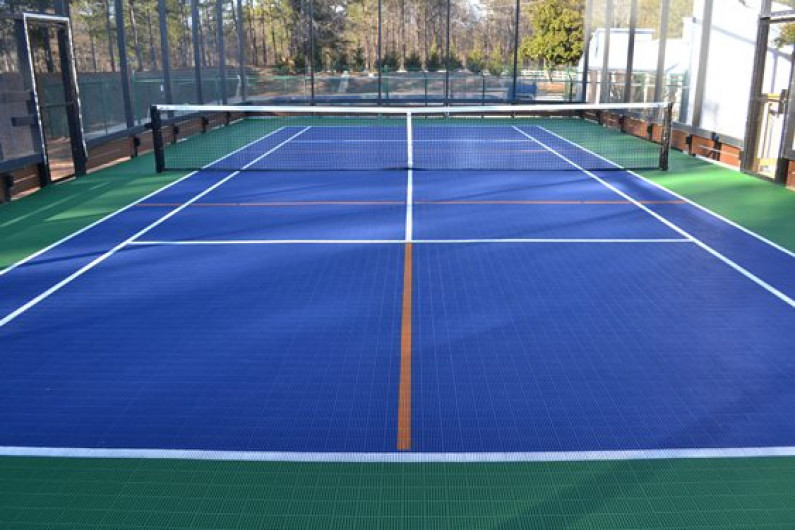Common Mistakes to Avoid in Your Pickleball Court Construction Process
Common Mistakes to Avoid in Your Pickleball Court Construction Process
Blog Article
Increase Resident Involvement With Community-Driven Pickleball Court Projects
The development of community-driven pickleball court tasks offers a special possibility to foster local interaction and enhance area ties. The actual question stays: how can these grassroots initiatives be tactically applied to ensure sustainability and inclusivity in diverse communities?
Importance of Area Interaction
Community interaction is a vital aspect in the effective advancement of pickleball court jobs, as it promotes a sense of possession and cumulative obligation among citizens. When neighborhood participants are proactively entailed in the preparation and execution phases, they are a lot more likely to support for the job's lasting success. Involving stakeholders such as neighborhood players, households, and leisure groups guarantees that the facilities meet the diverse needs and choices of the area.
Additionally, neighborhood interaction cultivates a supportive setting where homeowners really feel empowered to add their concepts and resources. Pickleball court construction. This collaborative approach can lead to innovative remedies that improve the design and capability of the courts, making them a lot more appealing to a bigger audience. Additionally, entailing locals in decision-making processes can strengthen social connections, promoting inclusivity and unity within the community
The exposure of community assistance for a pickleball task can likewise play a critical duty in protecting financing and approval from neighborhood authorities. By showing a shared commitment to recreational growth, areas can properly promote for resources and plan modifications that favor the facility of pickleball courts, ultimately improving the local society and recreational landscape.
Actions to Launch a Project
Launching a pickleball court job calls for a methodical strategy that improves the structure of community engagement developed in previous discussions. The primary step is to assemble a job board making up neighborhood stakeholders, enthusiasts, and agents from pertinent companies. This diverse team ensures that several point of views are taken into consideration.
Next, carry out a demands assessment within the neighborhood. Studies, emphasis teams, and public meetings can be reliable in assessing passion and event input on possible court areas, wanted amenities, and organizing choices. Following this, create a job plan outlining responsibilities, timelines, and objectives.
Once the plan is in place, engage with regional authorities to comprehend zoning guidelines and any type of needed licenses. Interacting transparently with the area throughout this procedure is crucial, as it fosters trust and encourages additional participation.
Additionally, arranging area events can help keep energy and interest. These events can offer as systems for further discussion and help to reinforce area connections. Paper every step taken and keep in-depth documents, as this will certainly be helpful for future phases of the project, consisting of funding and source procurement.
Funding and Resources Available
Safeguarding funding and resources for a pickleball court job is often a vital step that can establish the job's expediency and success. Various methods exist for acquiring financial backing, ranging from public funding to private sponsorships. City government gives, typically targeted at advertising neighborhood health and leisure, can supply significant economic support for such efforts.
Along with federal government resources, nonprofit companies and structures regularly supply gives specifically for sporting activities and community advancement jobs. Involving local services as sponsors can also be a fruitful method; many business are anxious to spend in community campaigns that boost their business social responsibility profile.
Crowdfunding systems have actually become a viable alternative for grassroots fundraising, enabling area participants to add straight to the task. visit their website This strategy not only raises funds but likewise promotes a sense of ownership amongst individuals.
Layout and Preparation Factors To Consider
Reliable layout and preparation are fundamental components of any effective pickleball court task adhering to the acquisition of funding and resources. An extensive evaluation of the suggested location is important; this consists of analyzing availability, distance to existing neighborhood facilities, and the potential for presence and engagement.
The format of the court have to comply with official size specifications while considering the surrounding setting. Integrating functions such as seating, color frameworks, and proper lighting can considerably enhance gamer experience and spectator enjoyment. Products chosen for the court surface need to focus on sturdiness and safety, with choices like acrylic or asphalt offering ideal blog performance.
Entailing neighborhood participants in the style process fosters a feeling of ownership and makes certain that the facility meets regional needs - Pickleball court construction. This can be attained with public examinations and studies, allowing stakeholders to reveal their choices and worries
Sustainability should additionally be a priority; including environment-friendly materials and techniques can add to lasting practicality. Ultimately, creating an upkeep plan to make sure the court stays in exceptional problem will support recurring community interaction and engagement in pickleball activities.

Success Stories and Study
Highlighting the transformative effect of community-driven initiatives, numerous success stories illustrate just how collective efforts have actually resulted in the growth of lively pickleball courts across various areas. One noteworthy instance is the effort in a village in Florida, where citizens banded together to convert an underutilized tennis court right into a devoted pickleball facility. With fundraising events and partnerships with neighborhood businesses, the neighborhood elevated sufficient funds to set up new internet, resurfacing, and lines, inevitably promoting a dynamic hub for local gamers.
Likewise, in a suburb of The golden state, a grassroots motion emerged to create pickleball courts in a regional park. The job not only involved volunteers for building but likewise consisted of workshops to involve area members in the sport. As an outcome, the courts came to be a prime focus for social interaction and health and fitness, drawing in players this page of any ages.
These study exemplify exactly how community-driven projects can enhance regional involvement, promote physical task, and enhance social bonds. By leveraging collective resources and interest, neighborhoods can effectively sustain and produce pickleball centers that serve diverse populations and cultivate a feeling of belonging.

Conclusion
By focusing on stakeholder involvement throughout the preparation and implementation phases, these initiatives can efficiently address varied community needs. Ultimately, such efforts add to the makeover of public spaces right into dynamic centers of health and fitness and social communication, enhancing area ties.
The emergence of community-driven pickleball court jobs provides an one-of-a-kind opportunity to foster neighborhood involvement and enhance area ties.Area engagement is a crucial element in the effective growth of pickleball court jobs, as it cultivates a feeling of possession and cumulative duty amongst homeowners. When area participants are proactively included in the preparation and application phases, they are a lot more most likely to support for the job's lasting success.Initiating a pickleball court task calls for a methodical strategy that constructs on the structure of community interaction developed in previous conversations. The project not only engaged volunteers for building and construction however additionally consisted of workshops to involve community participants in the sport.
Report this page